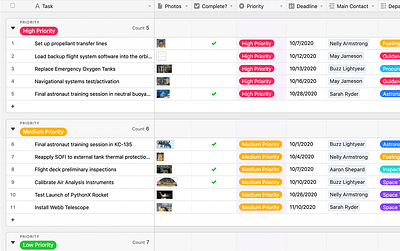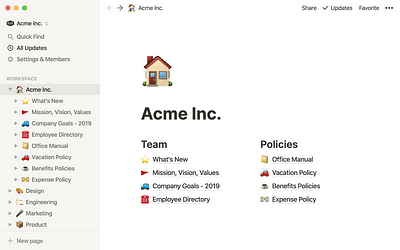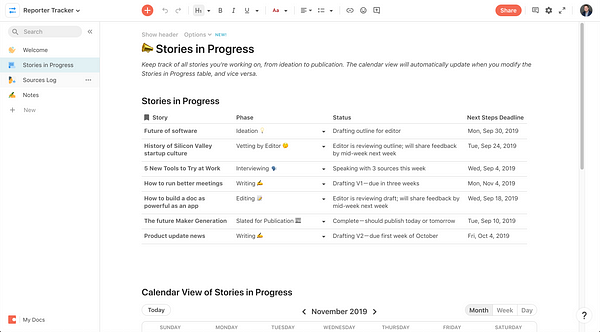This article was originally posted on Wrk.com on July 15, 2020.
In 1896, Nikola Tesla created an A.C. power generating system at Niagara Falls that helped generate power for swathes of cities in the North American manufacturing heartlands. Nowadays, our understanding of innovation may contain very different inputs and outputs to those at the turn of the 20th century, but one constant remains the same: Our work’s complexity usually mirrors that of the world around us.
120 years on from Tesla’s heyday and we find ourselves in a situation where intricate and diverse internet infrastructures have created jobs that people can’t explain, and workflows that span multiple tools and automation. Yet a significant portion of the workforce still has a hard time sharing a Google Drive file and for many, the joy of dragging their umpteenth card across a digital Kanban board, like Trello, is still far from a reality.
However, an emerging product category is looking to address the needs of a growing number of knowledge workers. Workers that are looking for solutions that are sufficiently adaptable, nuanced, and pragmatic to evolve with their new interconnected realities. These tools are hard to categorize, though they can generally be referred to as “all-in-one” workspaces. Current leaders in the space include AirTable, Notion, and Coda.



The productivity paradigm that these workspaces provide differs from traditional productivity tools in one critical way. Traditionally productivity software only asks the user to provide the information while the app handles the functionality. For instance, with Excel, you make spreadsheets; with Trello, you make Kanban boards. These new workspaces, ask the user to provide both the information and the functionality. I know you’re probably wondering how having to choose the information as well as the functionality will make your life easier, and that’s a fair question but let me share this example.
Imagine you are running a team of 10 people and you want to track their tasks, share files, gather research, and provide feedback on any of those items. You would need a separate tool for each of these activities such as file management, databases, and task management. Now instead of that, imagine you just have one tool and every time you create a new “file”, that file is totally blank — like an empty physical space. In a space, it’s up to you to choose the furniture and equipment and make a café, a gym, or a home. Similarly in the all-in-one workspaces, it’s up to the user to decide if this “file” is a database, a Kanban board, or a simple note.

You might be thinking that this change sounds like a pain in the ass more than anything else, so why is it “critical” you ask? There are two key reasons:
- It’s a potential sign that the “techie productivity nerd” is no longer an edge-case and that their behaviours are being adopted by a growing population of workers.
- It shifts the mindset of productivity tool designers from one of prescription to one of enablement.
Both of these point to a newfound maturity in the relationship between those that work and those that help them work. As a designer of a tool that helps others work, I can no longer afford to think about limiting the potential of our users because there is no way I can understand the unique complexity of their situation.
This doesn’t mean that specialized tools are dead. Word documents, Excel spreadsheets, Kanban boards, and cloud storage aren’t going anywhere anytime soon, nor should they. In many cases, the “all-in-one” tools actually integrate with these tools and tons of others to cover for the gaps in their own functionality — and that’s exactly the point. The idea is that the user sets up their own space, even if that includes tools that the “all-in-one” replaces. What will happen is that specialized tools will become increasingly relegated to the realm of “power users”.
Why should I create a separate spreadsheet file to store a simple list of competitor websites when I could just type “/table” in a single space in Notion and have a sufficient spreadsheet appear right in between a to-do list and a calendar of when the user interviews will be taking place. That said, you won’t see me calculating any complicated budgets in an all-in-one spreadsheet any time soon because they are simply not powerful enough, and to a financial analyst they may never be.
This flexibility also speaks to another sort of maturity in the industry of productivity tools. The recent prevalence and proliferation of a large number of competitors and copycat products mean that people can finally choose the perfect mix for themselves. The downside is that interoperability will become a headache too big for any painkillers curr
ently on the market (though I hear from a trusted source that hydroxychloroquine may be a miracle cure for all ailments).
Which brings me nicely to my final point: as a product designer in a process automation startup, our focus isn’t on building all-in-one productivity tools in this category a la Coda or Notion, but we are still subject to the all the forces I’ve outlined above, namely:
- An increasingly complex work environment necessitates more flexibility in the tools
- More knowledgeable workers expect more comprehensive functionality
- A crowded marketplace benefits from interoperability as people want to craft the toolset that best serves them
If anything, we are impacted by these changes twice as much as we are building the operational tools needed for enterprise processes as well as the individual workstations that our community uses to complete those processes. This unique set of challenges has presented our team at Wrk with a real opportunity to create a pioneering platform that is not only a game-changer in terms of the delegation of workflows but also is allowing us to shape and redefine how work is done.
However, if we are to achieve our vision of creating the building blocks of work, we need to be at the forefront of establishing these factors. We need to fully grasp how work instructions are created, how tasks are best delegated, and how workers can expect to increase their throughput in a clear and intuitive way.

